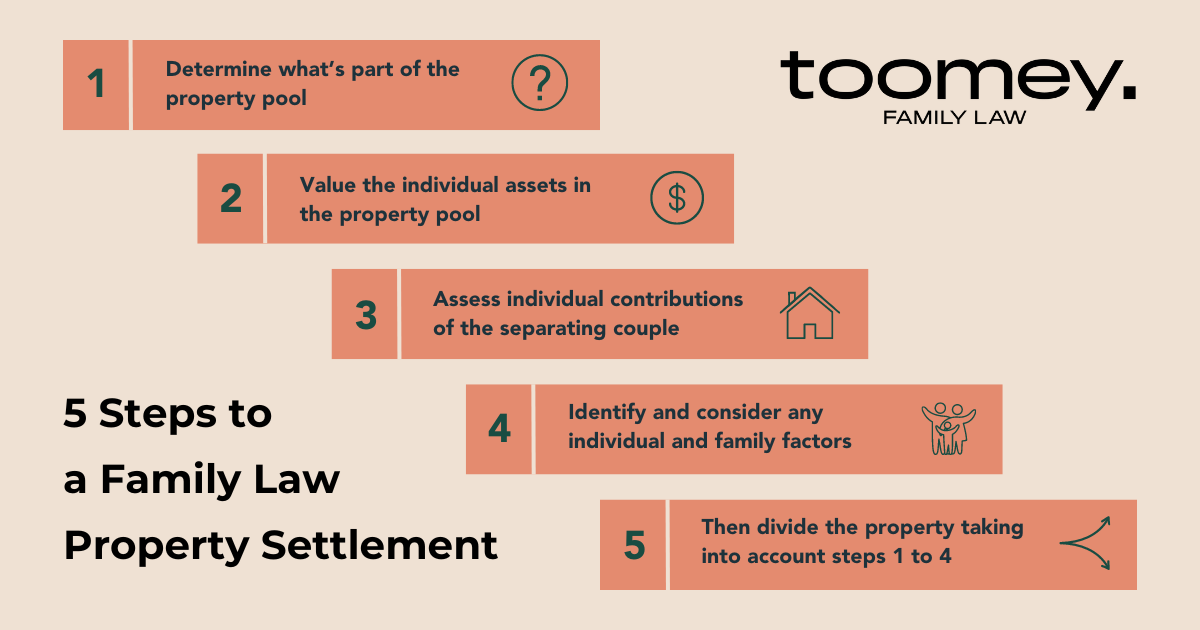
26 May Family Law Valuation — How will your property be valued and divided after a separation?
When a relationship breaks down, there are many things to consider. In addition to the obvious emotional toll, there is also the issue of raising children (if you have any), sharing your belongings (who gets to keep that precious vinyl collection?) and dividing any property you own together.
There are many misunderstandings and myths floating around when it comes to how property is valued and divided after a separation. As family law experts we’re going to explain exactly what a family law valuation is, why and when you need it and what the regulations are regarding the division of property.
What is a family law valuation?
A family law valuation is when a couple’s property is assessed to see what is included in their shared property (otherwise known as the ‘property pool’) and how much it is worth. In this case, we’re talking about a valuation that happens in the case of either a divorce or breakup of a de facto relationship. A family law valuation is done in order to ensure there’s a fair division of assets between the separating couple.

When and why would you need a family law valuation?
When determining the property pool in a settlement, the values of certain assets may not always be agreed upon. In the event that the parties cannot agree on the value/s, there is a process that must be followed in order to obtain a value for the asset.
Examples of assets that are commonly valued in property settlements include real property – like the family home – businesses, companies and, to a lesser extent, chattels or personal property.
What is involved in a family law valuation?
In a family law valuation, the property will be valued by an agreed third-party valuer. The valuer will of course need to carry out a physical inspection of the property, as well as consider other important factors such as recent sales to determine a fair market value. They will provide a written report setting out their expert opinion, which will be legally binding in the courts.
The best approach is to engage a jointly agreed certified property valuer who is registered by the Australian Property Institute and experienced in family law valuations.
This will allow everyone involved to rest assured they are receiving an independent, unbiased property valuation. The provided value must then be used by both parties for the assets when determining the full value of the property pool. The value is also accepted by the courts as evidence.
In the event a party rejects the joint single expert valuation then you can try and appoint your own valuer to argue against the joint single expert valuation. You will need to apply to the courts to have your valuers evidence accepted. It likely goes without saying that this is far less efficient and more expensive than choosing a single valuer and you must have a substantive reason to require your own valuer as opposed to the joint single expert valuer.

Valuing the family home
In many cases, the biggest shared asset will be the family home. There are many misunderstandings about what figure should be used when working out the family law valuation of a specific property. Some believe it’s the purchase price of the home or the bank’s valuation when they first bought the property, while others think it is the amount provided from an appraisal by a real estate agent.
But none of these are likely to give the most accurate value. In fact, the property may have risen in value since its purchase and the real estate agent could be giving an inflated price to earn your business.
The division of property
Now that you have the family law valuation, or the fair market value of how much the property would likely sell for, you will need to embark on the process of dividing the property pool.
The fact is that there is no simple formula or answer here – the outcome will be highly dependent on your individual and family situation. Both the contributions and the needs of each party will be taken into account to reach a fair and equitable outcome. This includes a legal duty to make a full and frank disclosure of your financial obligations during the disclosure process, which will require you to have a good understanding of your financial records and asset pool.
However, the way property is divided in the case of separation or divorce is governed by guidelines set out in the Family Law Act 1975 (Cth). It is likely that both parties and their lawyers will assemble to try to reach an agreement. This will then need to be confirmed by the courts.

5 Steps to a Family Law Property Settlement
- Determine what’s part of the property pool.
- Value the individual assets in the property pool.
- Assess the individual contributions – financial and non-financial – of the separating couple.
- Identify and consider any individual and family factors.
- Then divide the property taking into account steps 1 to 4.



